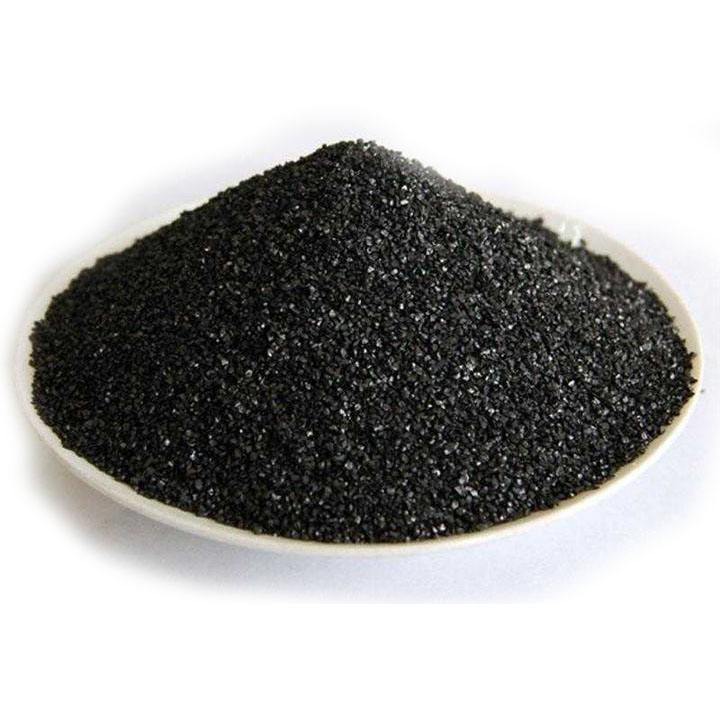Affected by the recovery of the world economy in the graphite industry, world graphite demand has steadily increased in recent years. According to the US Geological Survey (USGS), the world's primary graphite producing countries are China, India, Brazil, Canada, North Korea, Russia, and the Czech Republic. With the advancement of heating technology and acid leaching technology, the purity of graphite that can be obtained is getting higher and higher, opening up new applications of graphite in the field of high-tech. The innovation of purification technology has made graphite more widely used in carbon composite materials, electronics industry, friction materials, lubrication, and other fields. The flexible graphite industry represented by graphite paper has a good market prospect, and the widespread application of a large number of fuel cells has increased the amount of graphite.
Elements in graphite Graphite is an allotrope of carbon. It is a gray-black, opaque solid with a density of 2.25 grams per cubic centimeter, a melting point of 3652 °C, and a boiling point of 4827 °C. It has stable chemical properties, corrosion resistance, and it is not easy to react with acids and alkalis. Combustion in oxygen generates carbon dioxide at 687 ° C. It can be oxidized by strong oxidants such as concentrated nitric acid and potassium permanganate. It can be used as an antiwear agent, lubricant, high purity graphite as a neutron moderator in the atomic reactor. It also is used to make crucible, electrode, brush, dry battery, graphite fiber, heat exchanger, cooler, arc furnace Arclight, pencil refill, etc.

Occurrence of graphite Graphite is a mineral name that is usually produced in metamorphic rocks and is formed by coal or carbonaceous rocks (or sediments) subject to regional metamorphism or magma intrusion. Graphite is an allotrope of elemental carbon. The periphery of each carbon atom is connected to another three carbon atoms. The arrangement is a plurality of hexagons in a honeycomb style, and there is a weak van der Waals's gravity between each layer. Since each carbon atom emits an electron, those electrons can move freely, so graphite is a conductor. Graphite is one of the softest minerals. It is opaque and greasy to touch. The color ranges from iron black to steel gray. The shape is crystalline, lamellar, scaly, striped, layered, or scattered in metamorphic rocks. Chemically inactive and corrosion-resistant.
Graphite crystalline structure Graphite is a transitional crystal between atomic crystals, metal crystals, and molecular crystals. In the glass, carbon atoms in the same layer are sp2 fixed to form a covalent bond. Each carbon atom is connected to another three carbon atoms. Six carbon atoms form a regular hexagonal ring on the same plane and stretch to form a sheet structure. Carbon atoms in the same flight each have one p orbital, which overlaps each other, and the delocalized π-bond electrons can move freely in the crystal lattice and can be excited, so graphite has a metallic luster, can conduct electricity and transfer heat. Because the distance between the layers is large, the binding force (Van Der Waals force) is small, and the layers can slide, so the density of graphite is lower than that of a diamond, soft and smooth. Due to the strong bonding between carbon atoms on the same plane layer, it is tough to destroy, so the melting point of graphite is also high, and the chemical properties are also stable. Because of its particular way of bonding, it cannot be regarded as a single crystal or a polycrystal, and graphite is now generally considered to be a mixed crystal.
Graphite is a hexagonal crystal system with complete layered cleavage. The cleavage surface is dominated by molecular bonds and has a weak attraction to molecules.
Spheroidal graphite is a high-quality, high-carbon natural flake graphite as a raw material, which uses advanced processing technology to modify the graphite surface. It produces graphite products with different finenesses that resemble oval spheres.
Spheroidal graphite Spherical graphite materials have good electrical conductivity, high crystallinity, low cost, high theoretical lithium insertion capacity, small charge, and discharge potential, and flatness. They are currently essential parts of lithium-ion battery anode materials and are used for lithium-ion battery production at home and abroad. It has excellent conductivity and chemical stability, high charge and discharge capacity, long cycle life, and environmental protection.
In the processing of spherical graphite, the dry graphite concentrate is first crushed, trimmed, and magnetically separated in the spherical graphite workshop to form spherical graphite. Then it is purified into high-temperature spherical graphite.
TRUNNANO (Luoyang Trunnano Tech Co., Ltd ) is a professional Tungsten Carbide manufacturer with over 12 years experience in chemical products research and development. If you are looking for high quality Tungsten Carbide, please feel free to contact us and send an inquiry. 